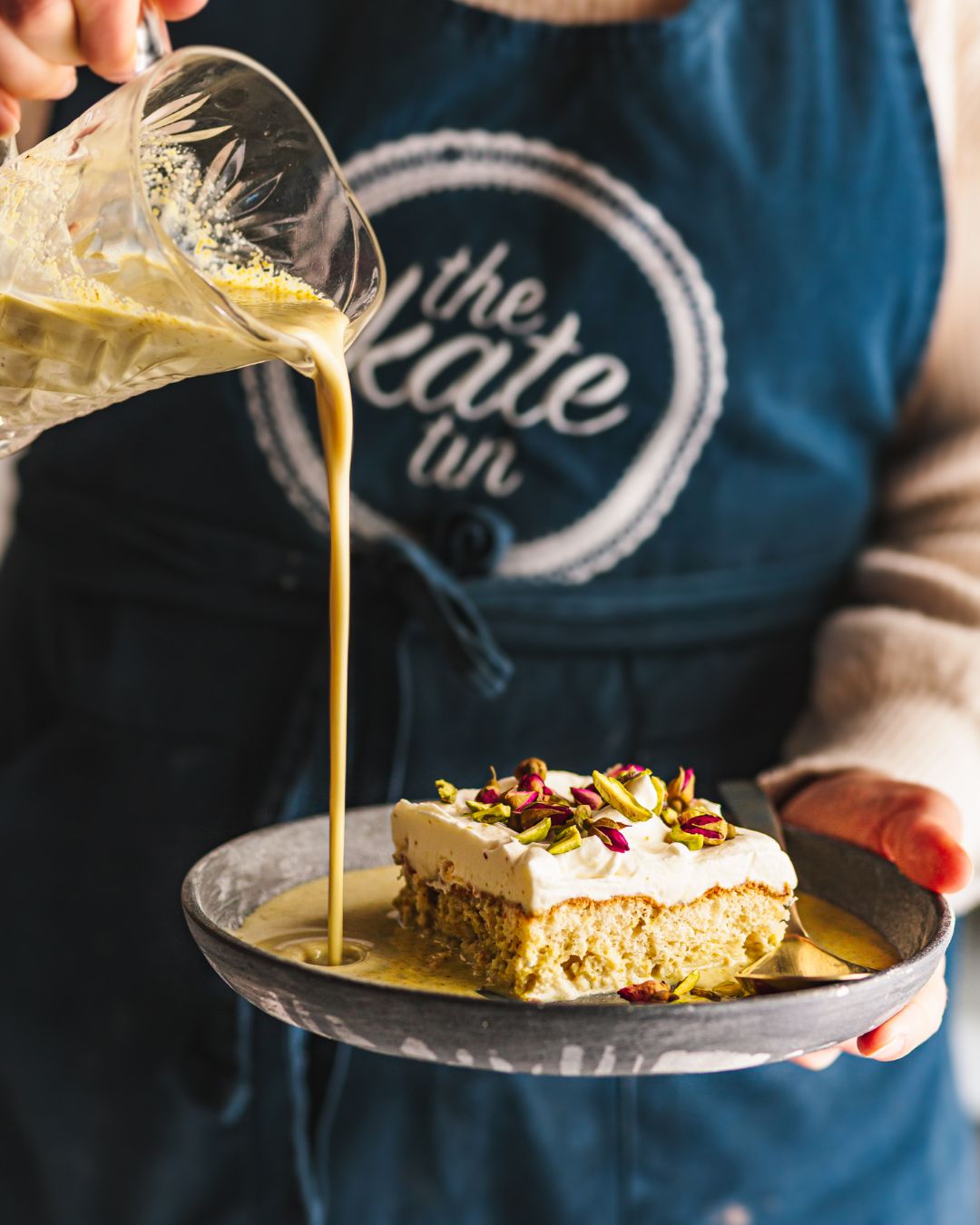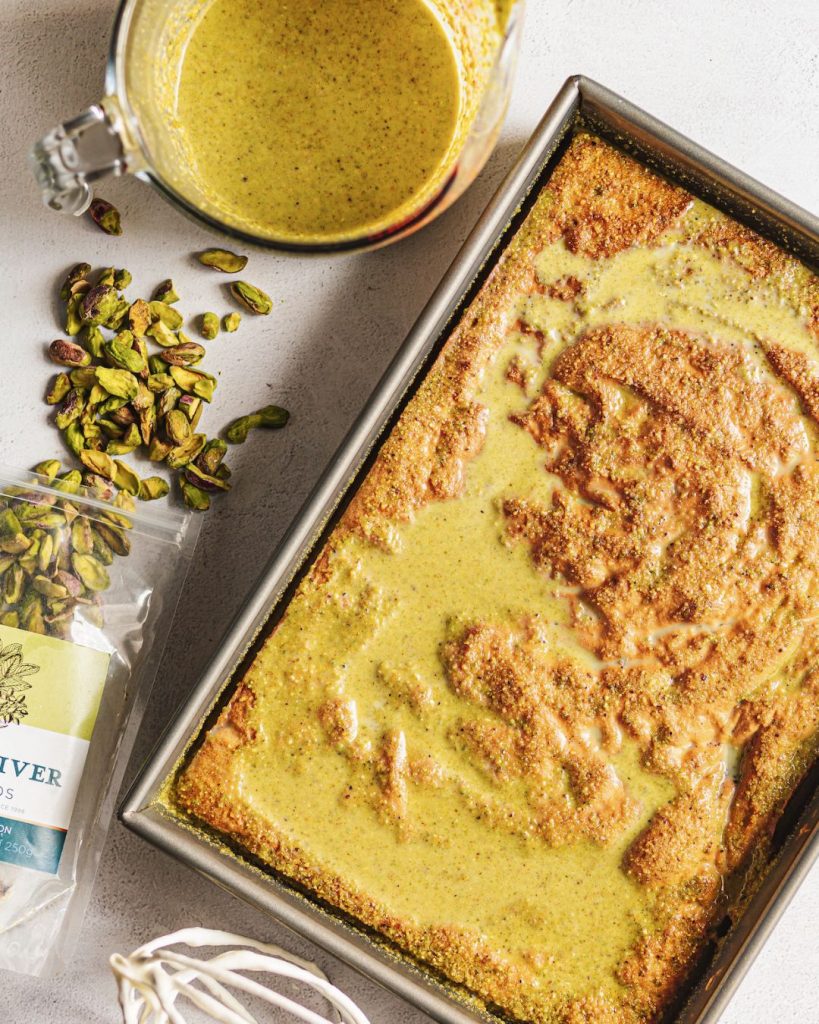Turkey, Iran, Afghanistan, Italy, Syria – and Prieska? It’s not the first place you think of when you hear the word ‘pistachios’ but it should be! Katelyn Allegra aka The Kate Tin travels to the Northern Cape to visit South Africa’s first pistachio farm.
Written by Katelyn Allegra
‘Beware of the kudus’, was the message that popped up on my phone from Rina Coetzee. I was on the long road to Prieska which winds from the Western Cape through the Cedarberg and into the Northern Cape. It is a breathtaking trip but one that many people thought I was, erm, nuts, to make. Yes, I was travelling 800km across the country to meet The Queen of Pistachios.
I struggle to keep up with Rina as she speeds through the dirt roads on their farm, past miles of mielies before stopping close to the banks of the Orange River. Here, the pistachio trees drink from their namesake, the Senqu River, a nod to the river’s origin in Lesotho. Combined with freezing cold nights and scorching hot days, this water gives Senqu River pistachios their incredible flavour.
Growing pistachios is a waiting game
Rina and I take a walk under the shade of the leafy pistachio trees. We’ve just missed the harvest but here and there are branches with sprays of nuts left to ripen a little longer. It took decades for them to reach this point. ‘For our first harvest, the trees were four years old. All we got from this entire orchard was a small bucketful!’, she laughs. With pistachio trees only giving a proper harvest after eight years, it’s a long-term investment that requires patience. ‘We are in year twenty five and we are still not in full production. These trees can grow to one hundred years old! There’s a saying in our industry that you plant pistachio trees for your grandchildren’.
‘When we first planted pistachios here in the 1990s, everyone thought we were mad!’ Rina is referring to the fact that pistachio farming was non-existent in South Africa at the time. The Industrial Development Corporation (IDC) identified Prieska as one of the best-suited areas in the world for pistachio production.
Did you know? Roasting destroys the beautiful colour and delicate flavour of pistachios, so use them raw in baked goods and desserts.
They imported the plants and established a large-scale project, with orchards and a processing facility to illustrate the commercial potential of pistachio production. Afterall, our global positioning means that we can supply pistachios to the Northern Hemisphere when their season is over. However, it wasn’t meant to be. In 2011, the IDC halted the project, leaving Rina and her husband Connie with thousands of pistachio trees and no idea how to grow them.
‘There were lots of expensive mistakes in the beginning – we had to remove five thousand trees because they had the wrong rootstock. It broke my heart. I rescued a few, kept them in pots outside my back door and decorated them with tinsel at Christmas but they still didn’t bear pistachios.’
What we refer to as a ‘nut’ is not a nut at all but a seed. ‘People with nut allergies can enjoy pistachios’ she tells me. Like cashews, cherries and olives, the pistachio is a drupe and the fleshy outer hull will turn a beautiful champagne yellow when ripe. The tree is mechanically shaken to drop the pistachios before they are taken to the shed for hulling, drying, sorting, shelling, roasting and salting. It’s an intense process that requires a lot of work.
Storing: The best way to store pistachios if you do not plan to use them right away, is to freeze them in a ziplock bag or airtight container. This preserves the delicate oils and keeps them fresh for a long period of time.
As I ask Rina ‘what makes your pistachios so special?’ I know the answer but ask it anyway just to see her eyes light up. ‘It’s the attention to detail. We are an all-female team and put love into every step. Most companies bake hundreds of kilos of pistachios at a time, while we roast ours in small batches to make sure they have just the right amount of moisture. It takes longer, but the results speak for themselves.
I’ve spent years experimenting and I’ve perfected the roasting technique – and just the right amount of salt’.
Plant pistachios for future generations
Once you’ve tasted Rina’s pistachios, you’ll understand. While most pistachios on supermarket shelves were harvested three to four years ago, Senqu River Pistachios are fresh and bursting with flavour. Not to mention their intense green colour. In this country we consume between 150 to 200 tons of pistachios per year, and only ten percent of that is produced locally. ‘The hardest part is getting people to try them first; once they taste the difference, they’ll buy them again and again. So, I never go anywhere without a bag of my pistachios!’
It’s this savvy business prowess that earned Rina a place as a finalist at AfriForum’s Entrepeneur of the Year 2021. In the last year she has not only released her range of pistachios but also bottled some very special honey produced by bees pollinating the pistachio orchard. Throughout the season, the honey changes colour. ‘The first batch was a pale light yellow with a clean, floral taste but when the the bee keeper came back later in the season to harvest the second batch, the honey had changed to a dark golden hue with a rich, toffee flavour. He had never seen anything like it!’
Rina’s Tasting Tip: The best way to taste pistachios is to place the entire pistachio (shell and all) in your mouth and allow the salt to dissolve and coat your tongue. This also softens the shell making it easier to crack open.
Being surrounded by such high-quality ingredients, it doesn’t surprise me that Rina is a self-confessed foodie. She tells me that she loves adding pistachios to her rusks along with a sprinkling of coconut. ‘My choc chip cookies with pistachios are now so popular we’ve started selling jars of the pre-mix to delis and coffee shops. But my absolute favourite way to enjoy pistachios came from a recipe I tasted on a trip to Thailand. Chopped red onions, pistachios, ginger, lemon and honey are combined and rolled up in a soft leaf. I make my version with spinach and it is delicious.’
While we pile way too many boxes of pistachios and honey into the boot of my car and I get ready to make the long 8-hour trip home, Rina tells me about her next venture. ‘We are getting ready to harvest our first pecans and almonds. You haven’t tasted carrot cake until you’ve had it with our pecan nuts.’
Something tells me I’ll be dodging those kudus again soon!
Pistachio Tres Leches Cake
Prep time: 15 minutes (plus overnight soaking) | Cook time: 30 minutes | Serves: 8

INGREDIENTS
- 100g shelled Senqu River pistachios, plus extra for decorating
- 250ml full-fat milk
- 4 large eggs, seperated
- 120g caster sugar
- 120g self-raising flour
- 1 tsp vanilla extract
- 250ml sweetened condensed milk
- 250ml evaporated milk
- 250ml fresh cream
METHOD
PREHEAT the oven to 180°C, or 160°C if using a fan-forced oven. Grease a 33cm x 23cm x 5cm cake tin.
PLACE the pistachios in the milk and set aside to soak (preferably overnight).
PLACE the egg whites in a large bowl and whisk with an electric beater until they form stiff peaks, then slowly add half the caster sugar. In a separate bowl, whisk the egg yolks and the rest of the sugar along with the vanilla extract until thick and light.
FOLD the egg whites into the egg yolk mixture and then gently sift in the flour. Fold in with a metal spoon or spatula. Pour the batter into the prepared baking tin and bake for 25-30 minutes. Cool completely. Use a skewer or fork to poke holes in the cake.
PLACE the pistachio milk, condensed milk and evaporated milk in a blender and blend until smooth. At this point you can strain it if you like. Pour 3⁄4 of the mixture over the cake (reserve the rest for serving) and refrigerate.
WHIP the cream until stiff peaks form then spread over the cake. Decorate with chopped pistachios. Serve the cake in squares and pour the remaining pistachio milk around the base to serve.
ALSO SEE: Zero waste ideas for speciality ingredients
Feature image: Katelyn Allegra

